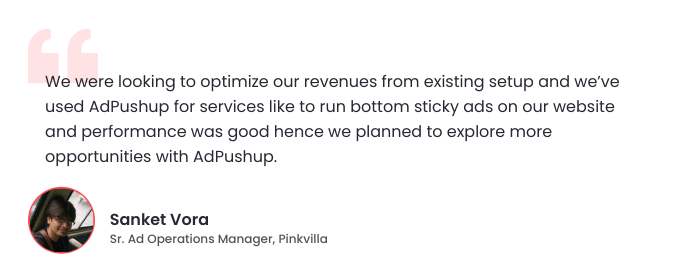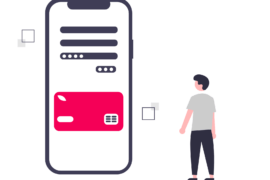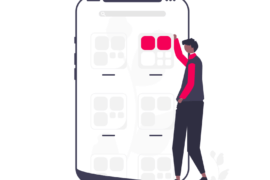Audience segmentation is used to categorize audience based on their online activity. But why do publishers need it? How can it benefit them? Know here.
Small and medium-sized publishers don’t invest in audience segmentation, mostly because they don’t understand how it can benefit them.
But the truth is, publishers can reap momentous benefit from audience segments – both from the sell-side and user experience perspective.
In this article, we’ll discuss why developing a strong audience strategy is key to achieving digital maturity. We’ll also share some high-value audience segmentation tips and discuss its application at length.
What is Audience Segmentation?
Audience segmentation is a process of dividing the audience into segments based on predefined criteria such as behavior, geographical location, historical data, product usage, and other parameters. In the ad tech industry, audience segmentation is used for ad targeting.
An example is creating separate ads for audiences based on whether they’re iOS users or android users, window users or mac users, or desktop or mobile users.
A more simplified example would be of a fitness freak user who responds to ads related to fitness. This is where audience segmentation helps – knowing the preferences and interests of your target audience to present them with targeted advertising so they tend to subscribe or return for more.
This is carried out by using website cookies. First, the publisher’s website sends the cookie data to the user’s web browser. Once installed, cookies monitor the user’s performance until either the user deletes the cookies or the cookies expire automatically.
The data collected by cookies is stored using data management platforms. Most DMPs sync directly with the advertisers’ DSP, so that data can be exchanged without compromising safety.
Image Source: IO Technologies
Why is it important to segment your audiences?
There are multiple reasons why publishers should segment their audiences. Let’s take a look at each:
- To overcome competitors:
This is perhaps the most important reason for segmenting audiences. Fierce competition in online marketing makes it difficult for publishers to sell their products or services, but if you’re smart enough to carefully target your audiences with segmented ads, you get ahead of the competition, and earn a better chance to convert leads into customers.
- To build relationships with audiences:
With audience segmentation, companies can create more personalized and audience-centric content that appeals to individual customers and helps build meaningful relationships as well.
- To personalise the approach:
Customers prefer super-relevant and personalized experiences over a generic approach. With audience segmentation, you can deliver this at the right time. Since search engines and social networks are collecting a lot of demographic and behavioral data about people, you can use them in your marketing approach to tailor your messages and ads more precisely.
How Can Segmentation Benefit Publishers?
In simple terms, segmentation helps to:
- Improve focus on each customer type
- Gain a competitive advantage
- Retain and attract right customers
- Implement customer-first marketing strategy
- Uncover hidden opportunities
Targeting is the bedrock of ad tech. In order to target an audience, advertisers need to know about the online behavior and affinity of the audience. This is where audience segmentation helps.
Only the publisher can access user information and segment it (“first party data”). Once recorded, publishers need to securely hand over this information to the advertiser.
Advertisers are willing to bid more for a properly segment audience. This is because relevant ads generate better leads and conversion for them. 62% marketing professionals believe audience segmentation is required for better ad targeting and cite it as one of their top priorities.
Audience segmentation can also help publishers create engaging content experiences based on insights such as: What time of day are most users active? What kind of content is most appreciated? Is there any chance to improve the quality of content?

How Can Publishers Segment Audience?
Among other things, cookies collect behavioral data about users. It would be a waste if the data collected by cookies is not stored and utilized. For that, you need a data management platform. Google Analytics also has some DMP-like functionalities.
Here’s how publishers can use Google Analytics to segment audience:
If you use Google Ad Manager or Google AdSense to monetize your inventory, then you don’t need a DMP because Google will automatically exchange information between their products. However, if you use the services of other ad networks and ad exchanges, then you need to use data management platforms. Sharing all the information collected by Google Analytics directly with advertisers can create security problems for you and your users.
Common Filters for Audience Segmentation
Segmentation depends on the requirements of the advertiser. However, if you are just starting out, then here are some basic audience segmentation criteria:
Demographic: Segmentation based on demographics will filter audience basis on their age group, gender, language, affinity category, behaviour, traffic source, location and more. These are the most basic information required by advertisers and is used for demographic targeting.
Some of the most popular demographic segmentation include:
- Age
- Gender
- Income
- Location
- Ethnicity
- Occupation
- Family Structure
Behavior:
Behavioral segmentation helps understand user’s interactions and is used for behavioral targeting. It can be evaluated based on session, session duration, clicks, and bounce rate. Using this data, publishers can also improve their audience interaction as well.
Technology:
This means filters like OS, browser, screen resolution, device category and such. Also, if mobile audience targeting is required, publishers can add segments by mobile devices, even brand, and model. This kind of segmentation data is used for technical targeting.
Traffic Source:
This segment helps publishers know about the source of their visitors. It can be direct, organic, paid campaigns, social media, referral, and more. These can further help you prepare attribution models or just learn more about the journey of the audience.
Other than these filters, publishers can segment the audience based on more advanced parameters (such as product clicks, acquisition channels, goal conversion, and more).
Best Practices for Segmentation Success
1. Create data-driven customer personas
If you really want audience segmentation to work for you, start by creating data-driven customer persons. For this, you’ll need to focus on core demographics such as age, location, family size, and ethnicity. One you have the data, build on it with insights of customer’s preferences, behaviour, interests, and affinities.
The next step would be to combine these data and create groups with an understanding of the campaigns best suited for a particular group.
2. Find more details about your customers
The research process doesn’t end at classifying people on the basis of their demographics or behaviours. You need to put in advanced efforts.
You’ll need to dig in and go beyond historical data. At this stage, you can map out detailed customer journeys that further helps you learn how to deliver your message for higher impact.
Find out which format, channel, or platform is suitable for different segments. Similarly, you need to figure out what engages your customers, and how they’re behaving across channels.
3. Use different channels
While you may love one platform over another, a good marketer should never avoid exploring different channels when it comes to building better relationships. So, make sure to reach out to different people across different platforms, try building a strong presence, and provide value to your audiences.
4. A/B test your segmentation strategy
If the current audience segmentation strategy didn’t work, you should consider experimenting with another mix – until you figure out the best way of reaching your potential customers. So, make sure to measure data of your existing strategy, then incorporate that information into your next effort.
5. Don’t overdo it:
Here’s an important one – audience segmentation is all about maintaining the right balance. If you create vague groups or narrow your audiences down too much, none of these tips will help. It will stop bringing you cash because either irrelevant or very few people will relate to your message.
Hence, it’s best to provide each member with personalised and exciting content in the first place, and then using audience segmentation as a supportive tool for achieving goals.
Final word
With policies like General Data Protection Regulation (GDPR) in action, audience segmentation is becoming a more complicated process. Of course, the security and privacy of the audience are important. But the ad industry needs audience targeting information to work efficiently.
Due to incidents like the Facebook–Cambridge Analytica data scandal, users are becoming wary of the data collection methods and often block third-party cookies. Since audience segmentation is initiated by publishers, it is also their responsibility to ensure data safety.
FAQs:
Ans. Audience segmentation is a process of dividing the audience into segments based on predefined criteria such as behavior, geographical location, historical data, product usage, and other parameters. In the ad industry, audience segmentation is used for ad targeting.
Ans. The Four Types of Market Segmentation
Demographic segmentation.
Behavioral segmentation.
Technology
Traffic Sources
Ans. Audience segmentation tips:
Create data-driven customer personas
Find more details about your customer’s needs
Use different channels
A/B test your segmentation strategy
Personalise your segmentation approach

Shubham is a digital marketer with rich experience working in the advertisement technology industry. He has vast experience in the programmatic industry, driving business strategy and scaling functions including but not limited to growth and marketing, Operations, process optimization, and Sales.







